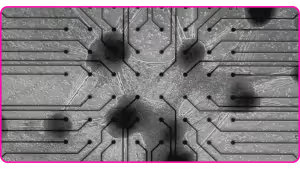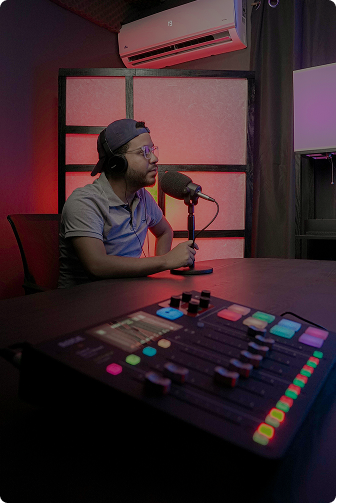Cortical Labs: Building Synthetic Biological Intelligence
Cortical Labs: Building Synthetic Biological Intelligence
.png)
Cover image adapted from Cortical Labs
For as long as I can remember, researchers have tried to use silicon to mimic the brain, and neurons to build computers. Now, Australian biotech startup Cortical Labs is pushing this vision into reality with its groundbreaking CL1, the world’s first commercially available biological computer. But why even attempt such a feat? After all, biological systems are notoriously finicky. As someone who worked with living cells during my PhD, I can confirm: some cell culture will just die if you look at them wrong. Yet Cortical Labs’ innovation raises a compelling question: could biological computing’s unparalleled efficiency outweigh its fragility?
The Efficiency Argument: Why Brains Beat Silicon
Let’s start with a car analogy. A vehicle’s acceleration hinges on its power-to-weight ratio. For computers, the critical metric is “computing power per watt consumed”. Here, biology leaves silicon in the dust. The human brain, for instance, operates on a mere 20 watts1, roughly the energy of a dim lightbulb, while performing tasks like pattern recognition, decision-making, and creative problem-solving. By contrast, replicating this capability with silicon would require a staggering 2.7 gigawatts (135 million times more power)2 and 14.6 ExaFLOPS of computing power to simulate one second of brain activity.
This inefficiency isn’t just theoretical. Traditional AI systems devour energy, with training runs for models like GPT-3 consuming as much electricity as hundreds of households. Biological computing, however, could offer a 900-million-fold improvement in energy efficiency2. Cortical Labs’ CL1, which integrates lab-grown human neurons with silicon chips, aims to harness this potential.

Credit: Cortical Labs. Neurons living on a silicon chip.
The CL1: A Hybrid Marvel
Priced at $35,000, the CL1 isn’t your average server rack. Here’s what makes it revolutionary:
- Biological-Silicon Hybrid: The device combines 800,000 lab-grown human and mouse neurons on a silicon chip, enabling two-way electrical communication.
- Biologically Intelligent OS (biOS): A simulated environment trains neurons to process data, bridging biological and digital systems.
- Life Support System: To counter biological fragility, the CL1 includes pumps, gas mixers, and feeding reservoirs to keep neurons alive for six months.
Achievements and Applications
In 2022, Cortical Labs grabbed headlines by teaching neurons to play Pong, a feat showcasing self-adapting “biological intelligence”. Now, the company is scaling up. Their upcoming biological neural network server stack could democratize access to this technology, allowing researchers to experiment without specialized hardware.
Potential applications span:
- AI/ML: Matching or surpassing traditional AI in tasks like real-time decision-making.
- Drug Discovery: Simulating neurological responses to accelerate testing.
- Robotics: Enhancing adaptability in unpredictable environments.
Solving Pharma’s $3B Neurological Drug Failure Problem
The pharmaceutical industry loses over $3 billion per approved drug due to late-stage clinical failures, with neurological and psychiatric treatments facing the highest attrition rates. Cortical Labs’ CL1 directly addresses this crisis by offering a human-relevant testing platform. Unlike animal models or synthetic AI, the CL1’s lab-grown neural networks capture biological nuance that determines real-world efficacy.
Case in Point:
- Disease-in-a-Dish Modeling: Researchers can induce Alzheimer’s-like tau protein aggregation or epileptic hyperexcitability in CL1’s neurons to test drug responses in controlled environments. As CSO Brett Kagan notes, "You can actually see the nuance of synaptic changes that predict side effects—something impossible with traditional AI."3
- Longitudinal Insights: The system’s 6-month neuron viability allows pharma teams to study chronic drug effects, like dopamine receptor desensitization in Parkinson’s treatments, a key factor in real-world patient tolerance.
This biological fidelity could slash preclinical costs: Early adopters like Cortex Discovery report a 40% reduction in failed lead candidates by filtering compounds through CL1 before animal trials.
Personalized Medicine & The End of “One-Size-Fits-All” Neurology
The CL1’s most disruptive application lies in personalized drug testing. By culturing neurons from patient-derived stem cells, it creates bespoke neural networks that mirror individual biology.
Transformative Applications:
- Epilepsy Tailoring: For the 30% of epilepsy patients resistant to standard drugs, CL1 can grow their neurons to test 15+ anticonvulsants in weeks, versus years of trial-and-error dosing.
- Alzheimer’s Subtyping: CL1 networks from APOE4 vs. sporadic Alzheimer’s patients reveal subtype-specific drug responses, guiding precision therapies.
This aligns with pharma’s shift toward biomarkers and patient stratification. As CEO Hon Weng Chong states: "We’re not just finding drugs, we’re matching them to the molecular fingerprints of diseases."
Furthermore, the system reduces animal testing by 65% in early neuro studies (per Cortical’s pilot data), addressing both ethical concerns and the 89% translational failure rate of rodent models in CNS drugs.
The Bigger Picture: A Biological Revolution?
Cortical Labs’ work forces us to rethink computing’s future. Yes, biological systems are messy. Neurons die, cultures require meticulous care, and scaling remains a challenge. But if the CL1’s efficiency gains hold, the payoff could be transformative. Imagine data centers powered not by megawatts of electricity, but by self-sustaining biological networks. Or AI systems that learn and adapt with human-like nuance.
As CEO Hon Weng Chong notes, the goal isn’t to replace silicon but to merge its strengths with biology’s efficiency. It’s a vision straight out of sci-fi, but one that’s now sitting in a lab, humming quietly on 20 watts of power.
About the Author
Dr. Thibault Geoui is a life sciences strategist and advisor specializing in AI-driven drug discovery and digital transformation. With a PhD in structural biology and experience spanning pharma, biotech, and tech, he helps organizations bridge the gap between data, AI, and drug development. Follow Decoded Drugs for weekly insights on how technology is reshaping the future of medicine. Read more from the Decoded Drugs
.png)
.png)
.png)

